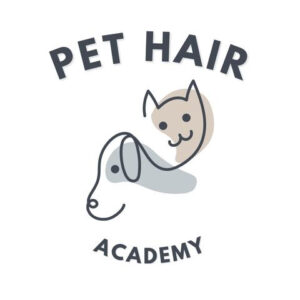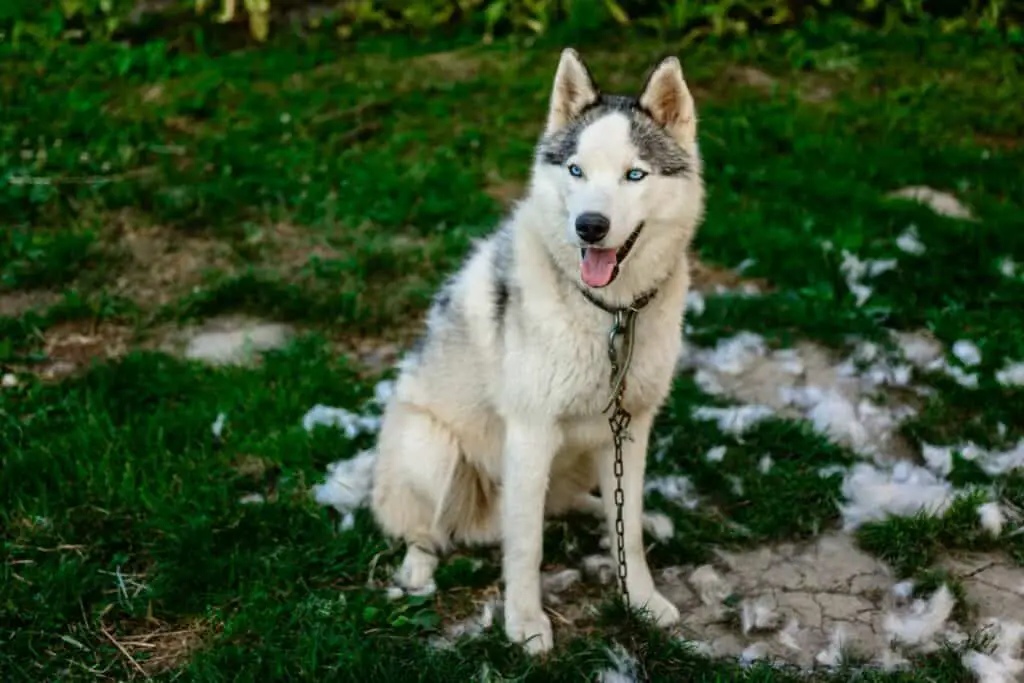
There is something quite disheartening about giving your furry friend the most loving bath, only to find that they are still shedding mountains of fur. A dog’s shedding season can be incredibly frustrating for owners. When I owned my Siberian Huskies, we would get mountains of fur! What is the cause behind all of this hair? What should you do to prevent so much shedding, and when should you furminate?
Dogs shed more after a bath because scrubbing can accelerate the natural shedding process. Baths do not increase hair loss but accelerate the natural shedding process. Water can cause dog fur to stick together, preventing it from being washed away, and once dried, it will loosen and shed.
We have done the research and have everything you need to know about dogs shedding after baths and when to furminate (my favourite pet hair brush)! To understand what furminating is, the best way to bathe a dog, and how to cope with a dog’s shedding, continue reading below!
Why Does My Dog Shed so Much After a Bath?
Dogs will shed more after a bath because the friction of lathering and rinsing will loosen their hair entirely out of the follicle. The truth is that dogs will not shed more because of a bath or simply getting wet.
Bathing dogs speeds up the natural shedding process by loosening the fur that has already been released from the hair follicle, and will not cause more shedding.
Water will cause the dog’s fur to stick together, so most excess hair will fall or be brushed out after a good bath when the hair is completely dry. Because bathing speeds up the process by cleaning your dog’s coat, removing, and loosening dead hair stuck in the undercoat, baths can be helpful if your dog’s shedding is out of control.
if your dog’s shedding is out of control.
Read Now: How to Get Rid of Wet Dog Smell After Bath? Causes Included
You can also visit a professional dog groomer or purchase the materials yourself and give your furry friend a de-shedding treatment.
De-shedding shampoos and conditioners moisturize and hydrate your dog’s skin, creating healthier and stronger hair follicles. This can mean less shedding, but these treatments, mixed with proper grooming, must be done more frequently to combat excessive shedding.
To make the grooming and de-shedding process associated with something positive, take your dog on a walk or play a game with their favourite toy.
Making the grooming process will not only strengthen your bond with your furry friend but perhaps make a calmer and happier dog.
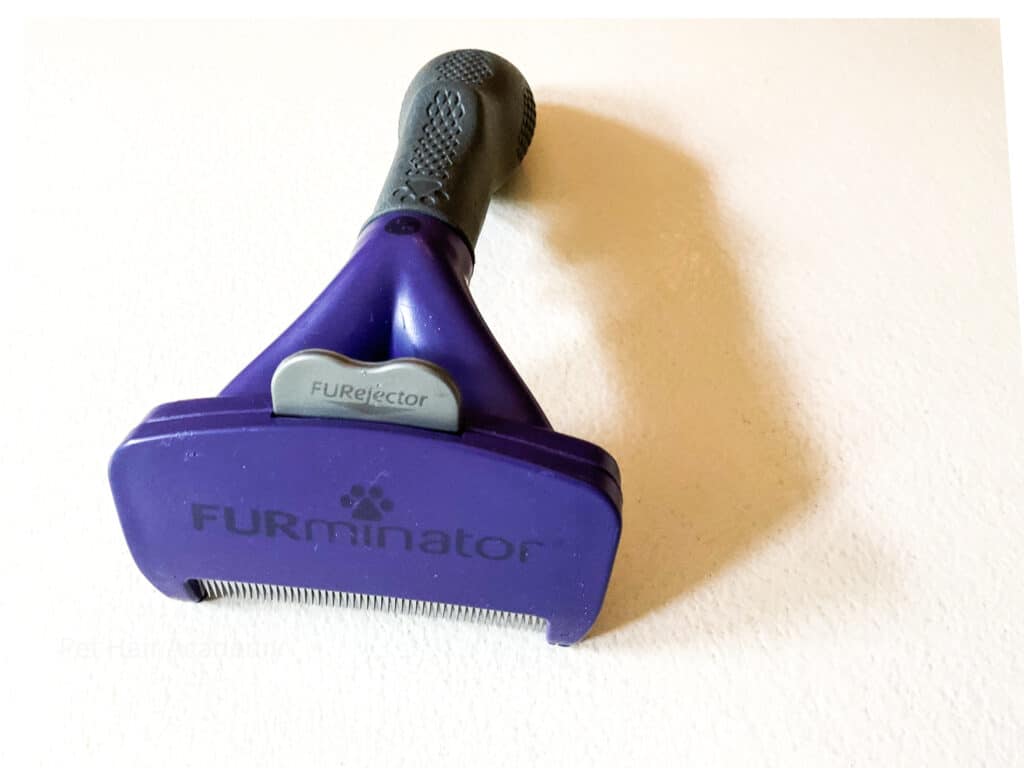
What is FURminating and Should I Use it During a Bath?
FURminator is a tool that helps remove loose undercoat hair and should be done 1 to 2 times a week for 10 to 20 minutes. It is by far the best brush I have used on my pets, and I recommend it to everyone! I even have it in two sizes for easy access to different parts of the body, as I use the smaller one for armpits and other tricky-to-reach spots!
The FURminator is a de-shedding brush tool that reduces the amount of shedding. It reduces loose hair by 99%, keeps the dog’s fur and skin completely healthy, and maintains a mated and tangle-free animal.
is a de-shedding brush tool that reduces the amount of shedding. It reduces loose hair by 99%, keeps the dog’s fur and skin completely healthy, and maintains a mated and tangle-free animal.
The FURminator brush does this without cutting the dog’s coat. It is used by professional dog groomers or a dog’s owner. The FURminator works when your dog has no mats or tangles as this brush is meant to reduce shedding by removing the loose hair un instead of removing knots.
works when your dog has no mats or tangles as this brush is meant to reduce shedding by removing the loose hair un instead of removing knots.
Using the FURminator de-shed tool before your dog's bath is a key step to an effective grooming session. Grooming before the bath means there is a good chance of removing and preventing knots and mats that may tighten while wet. This is why pre-grooming before a bath is so important.
Brushing before a bath also removes excess dirt, debris, and bacteria and prevents cross-contamination to different body parts, especially more susceptible areas such as the eyes, ears, and nose.
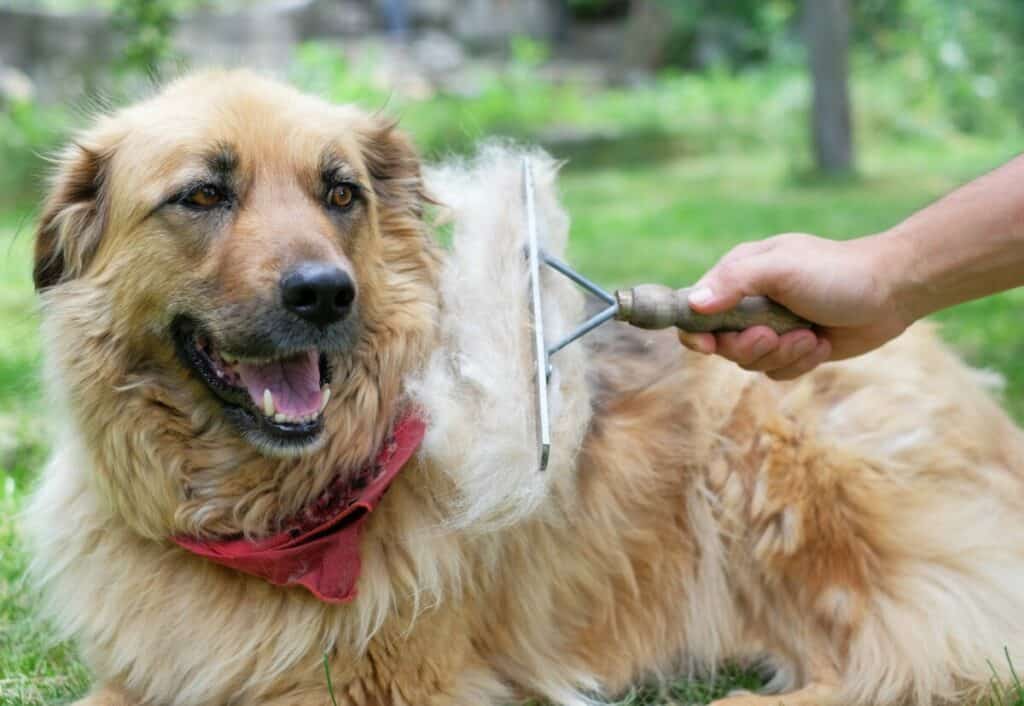
Again, removing large and tangled amounts of fur is best before the dog hair gets wet and becomes an untamable monster and prevent issues after the bath.
If brushing is avoided, it can cause things to become worse and make it painful to groom your dog later on, making it not a pleasant or happy experience for your dog. Positive emotions should be associated with grooming, and it’s important to build that from when the dog is young and not overwhelm them.
After the pre-grooming is done, bathing will easily remove the existing hair and any dirt left behind from brushing.
The FURminator will also allow the dog shampoo and conditioner to be more effective since it can easily reach the skin and be rinsed off easily. If you want to brush your dog during the bath, FURminator has a Bathing Brush for purchase.
for purchase.
Finally, gently use the FURminator after the bath to remove any loose hair left behind. But remember that it is crucial to fully dry the dog after the bath before brushing. Thoroughly drying is essential to prevent skin irritation and hair from clumping and matting once more.
Here is a step-by-step of everything we talked about below.
How to do an at-home de-shedding treatment:
- Brush before the bath with the FURminator
- Shampoo and condition with a de-shedding treatment
- Fully dry your dog with a low-heat hair dryer
- Brush once more with the FURminator to gather any leftover or missed hair
Dogs can also develop hairballs. I had no idea until my dog had one. So I put together a resource linked below all about dog hairballs that provides the information I compiled from the copious amounts of research I did on them!
Read Now: Dog Hairballs; Are Certain Dogs More Prone? What To Look For
How often should I brush my dog and when to know if your dog is shedding too much
Another way to prevent shedding besides bathing and doing a de-shed treatment is to have a consistent grooming schedule.
The FURminator de-shedding tool should be used 1 to 2 times weekly for 10 to 20 minutes per session. However, regular grooming should be done 1 to 3 times a week for 10 minutes per session, depending on hair type, breed, and amount of tangled hair.
should be done 1 to 3 times a week for 10 minutes per session, depending on hair type, breed, and amount of tangled hair.
Unfortunately, there is no “normal” amount of shedding for dogs. Each shedding amount depends on the dog’s breed, age, and hair type. Some breeds of dogs have fur and shed more, such as Akita, Siberian Husky (I have owned 4 over the years and let me tell you, they shed ALOT), Golden Retriever, Labrador Retriever, or German Shepard.
However, breeds such as Poodles have dog hair instead of fur, meaning that it does not shed, and they need to be groomed.
instead of fur, meaning that it does not shed, and they need to be groomed.
Sometimes shedding can signal a poor diet, so changing your dog’s food or eating schedule may help with shedding. If you have any concerns that your furry friend is shedding too much, you should speak to a licenced veterinarian. Seeing a professional groomer regularly may also help.
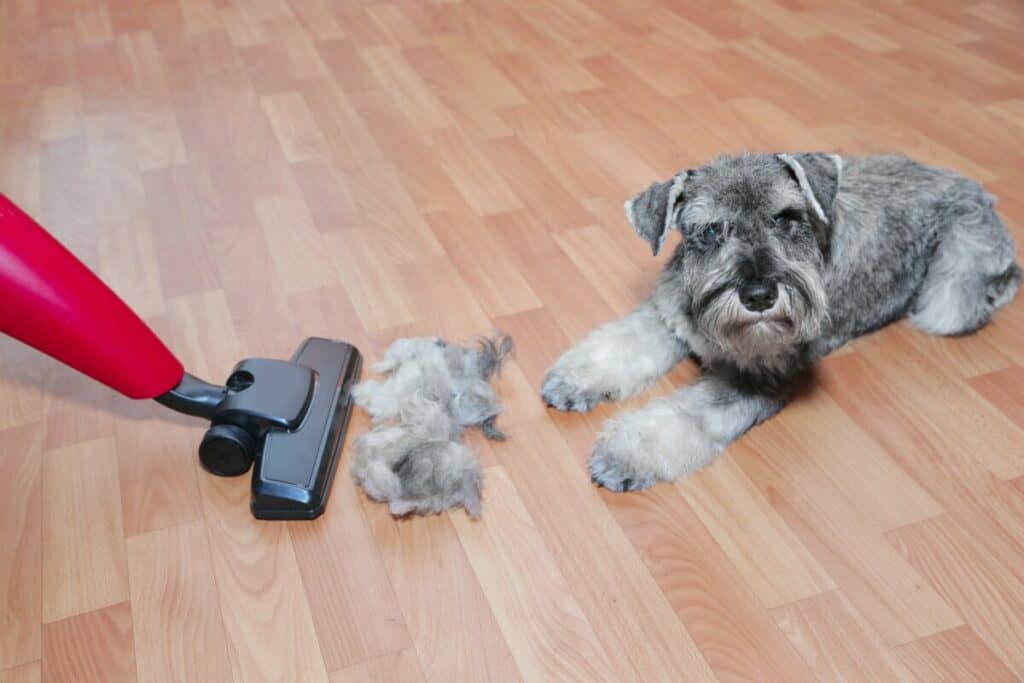
The only way to manage a dog’s shedding is to keep up with the grooming or look for signs that your dog is unhealthy and that his shedding signals an underlying illness . Illnesses that cause shedding include diabetes, thyroid disorders, poor nutrition, and skin disorders.
. Illnesses that cause shedding include diabetes, thyroid disorders, poor nutrition, and skin disorders.
The post I wrote about dog hair regrowth is linked below. It goes through the different hair regrowth stages, including what happens in shedding seasons!
Read Now: Dog Hair Regrowth; After Shaving, Mange; Including Timeline
If you see your dog itching by rubbing up excessively on people or objects, have patchy hair loss, skin lesions, or signs of generalized illness, take them to the vet as soon as possible.
Having a regular check-up and health assessment at the vet is an important part of care for your furry friend. Even though they may seem healthy, vets are trained and highly skilled to spot things someone who is not a vet may not notice.
I hope you have found this information useful, and good luck with grooming your pet!
Holly 🙂
